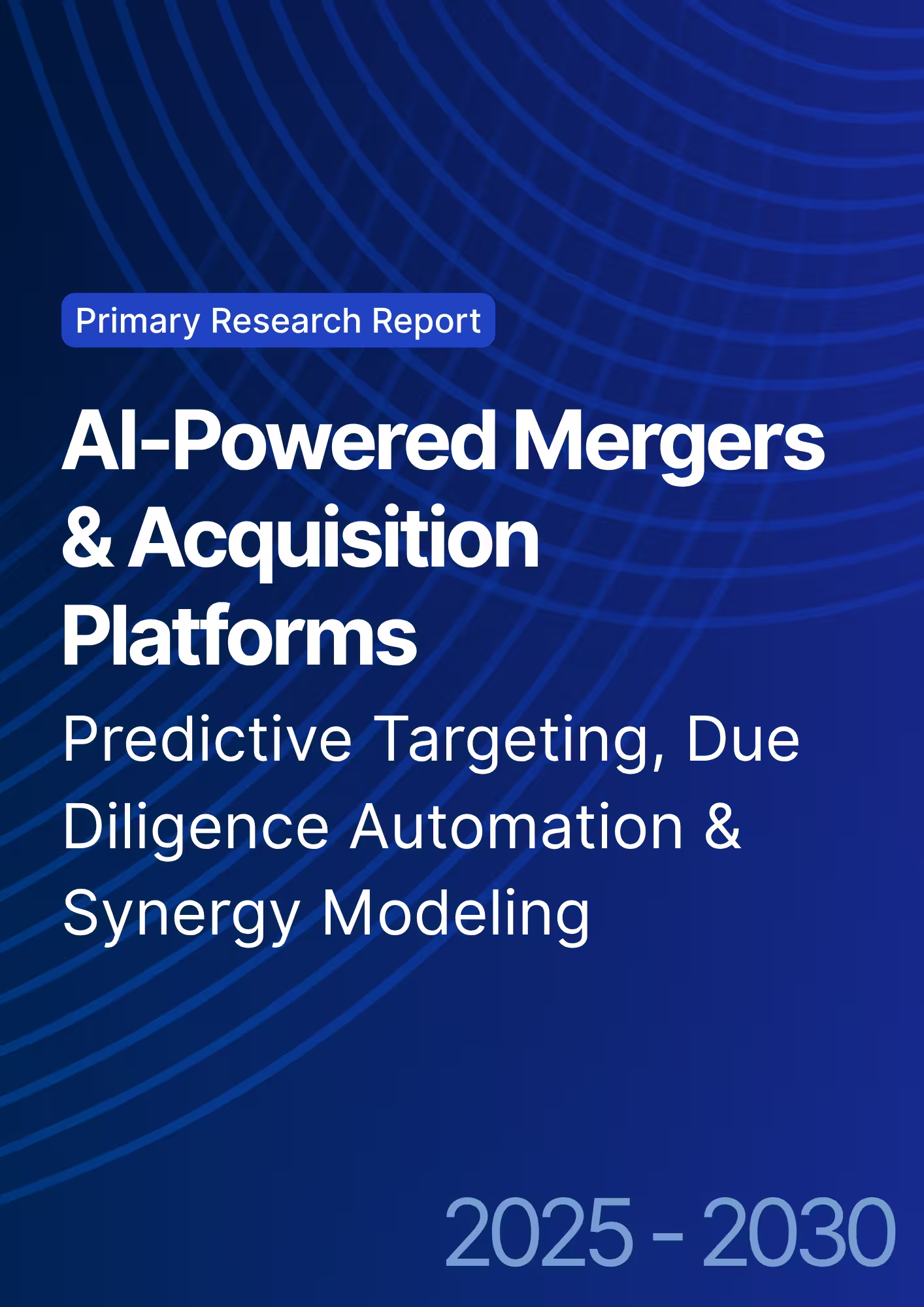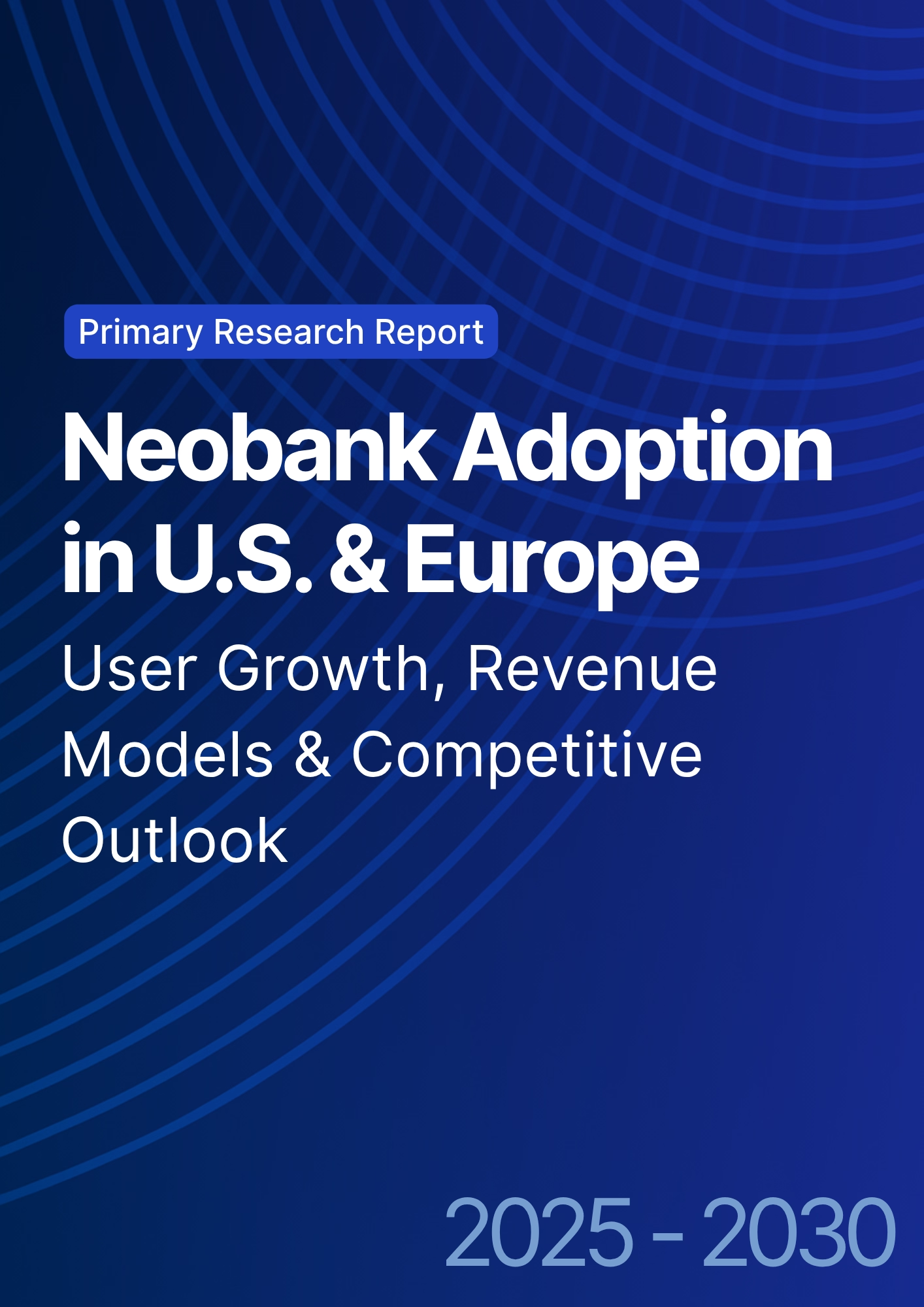

68 Circular Road, #02-01 049422, Singapore
Revenue Tower, Scbd, Jakarta 12190, Indonesia
4th Floor, Pinnacle Business Park, Andheri East, Mumbai, 400093
Cinnabar Hills, Embassy Golf Links Business Park, Bengaluru, Karnataka 560071
Connect With Us
5G-Enabled Smart Branch Experiences: IoT Integration & Customer Engagement Analytics - Technological Advancements
The integration of 5G-enabled smart branch experiences is poised to transform banking environments in Europe, particularly in Germany, by 2030. The market is projected to grow from €1.5B in 2025 to €7.2B by 2030 with a CAGR of 36.4%. By utilizing IoT integration, real-time customer engagement analytics, and AI-driven personalization, banks will deliver interactive in-branch experiences that improve customer satisfaction, increase operational efficiency, and streamline service delivery. The adoption of 5G technology will enable low-latency communications and drive a new era of connected banking services, significantly boosting foot traffic and transaction volumes.
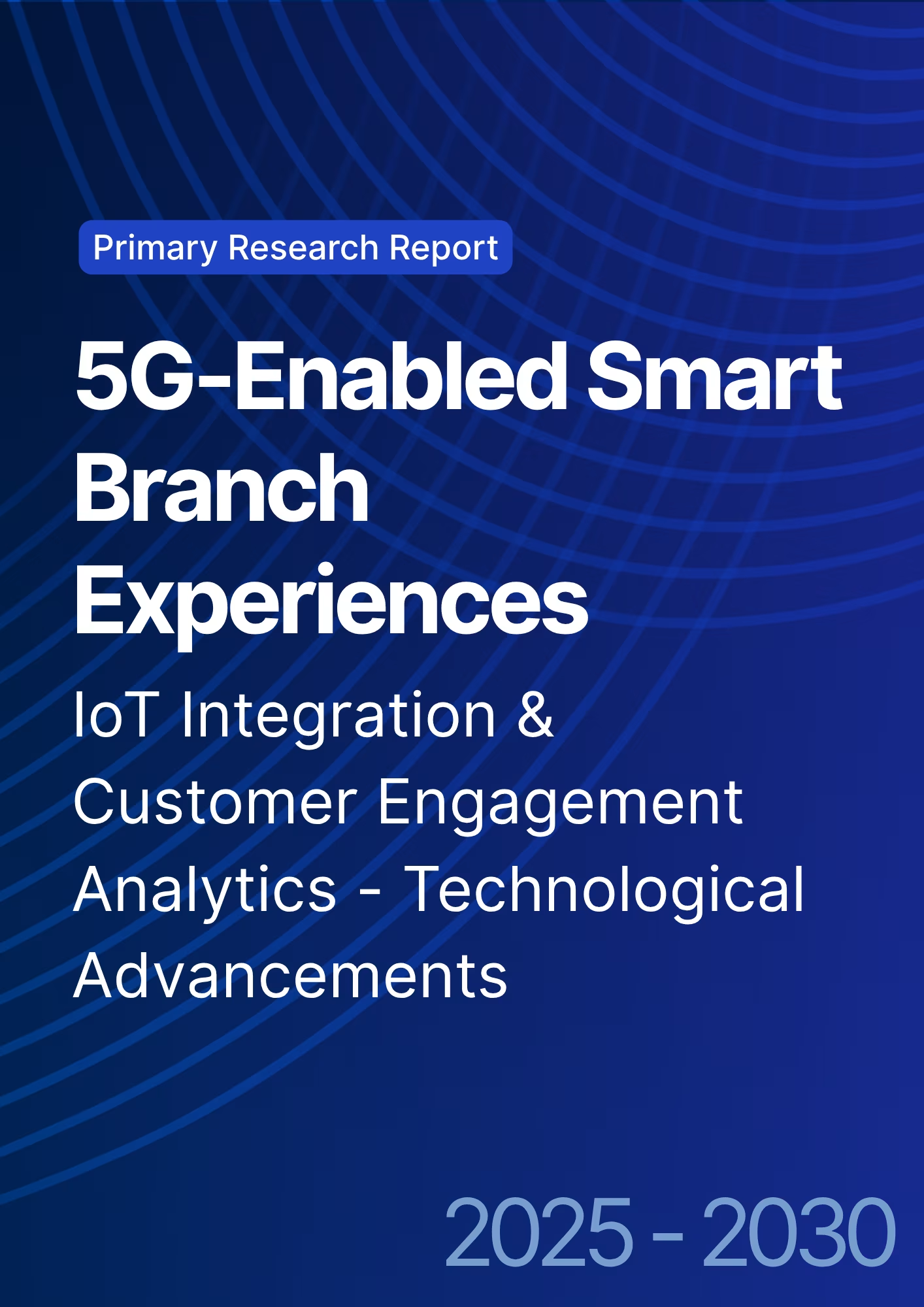
What's Covered?
Report Summary
Key Takeaways
- Market size: €1.5B → €7.2B (CAGR 36.4%).
- Real-time engagement analytics will increase customer satisfaction by 30%.
- IoT-enabled smart branches to increase foot traffic by 25%.
- 5G integration will reduce latency in transaction processing by 40%.
- AI-driven personalization to boost cross-sell opportunities by 22%.
- Operational efficiency improvements expected to save €350M annually.
- Connected banking will drive 20% increase in in-branch transactions.
- Customer journey mapping will increase service adoption rates by 18%.
- German banks are expected to lead with 55% adoption of 5G-enabled branches.
- Cost savings through AI-driven service scheduling will reach €400M by 2030.
Key Metrics
Market Size & Share
The 5G-enabled smart branch experience market in Europe is forecasted to grow from €1.5B in 2025 to €7.2B by 2030, driven by the adoption of IoT technologies and real-time analytics for customer engagement. Germany will account for 55% of the market share, as leading banks like Deutsche Bank, Commerzbank, and UniCredit implement 5G-powered branches for seamless customer service. By 2030, 70% of financial institutions in Germany will operate IoT-enabled smart branches, increasing foot traffic and enhancing transaction volumes. AI-driven personalization and real-time engagement analytics will significantly improve cross-sell opportunities and service adoption rates, resulting in a 30% boost in customer satisfaction.

Market Analysis
The integration of 5G technology and IoT systems into banking environments is a game-changer for customer interactions in Germany and across Europe. By offering real-time engagement, smart branches provide personalized, interactive experiences that increase foot traffic and transaction volumes. AI-powered systems help banks deliver tailored financial advice, optimize service queues, and improve customer service through predictive analytics. The shift to 5G-powered systems enables low-latency communication, ensuring smooth transactions even in high-traffic environments. By 2030, the German banking sector will set a global standard for smart, connected branches, positioning itself as a leader in tech adoption within Europe.
Trends & Insights
- 5G Adoption: 40% decrease in transaction processing latency in smart branches.
- IoT Integration: Enhances operational efficiency, reducing infrastructure costs by 25%.
- Customer Satisfaction: Improved by 30% through AI-powered real-time engagement analytics.
- Personalized Services: AI-driven personalization boosts cross-sell rates by 22%.
- Branch Experience Innovation: 25% more foot traffic due to IoT-based smart environments.
- Operational Cost Reduction: AI scheduling tools to save €350M annually.
- Data-Driven Decisions: Real-time analytics enabling faster service delivery.
- Customer Journey Mapping: 18% improvement in service adoption.
- Regulatory Compliance: Ensuring data privacy through AI systems.
- Sustainability Focus: Green banking practices increasing sustainability in branch operations.
These trends show how 5G-enabled smart branches will leverage IoT and AI to reshape customer service, improve efficiency, and optimize operational costs for banks in Germany and across Europe.
Segment Analysis
The 5G-enabled smart branch experience market is segmented into customer engagement analytics (40%), IoT integration (30%), AI-driven personalization (20%), and operational optimization tools (10%). Customer engagement analytics leads the market with 40% share, focusing on real-time data and predictive models to improve customer interaction. IoT integration, representing 30%, powers real-time occupancy tracking, automated service routing, and predictive maintenance. AI-driven personalization accounts for 20%, providing customized financial advice and targeted offers based on user behavior. Operational optimization tools, at 10%, focus on resource allocation, staff scheduling, and queue management.
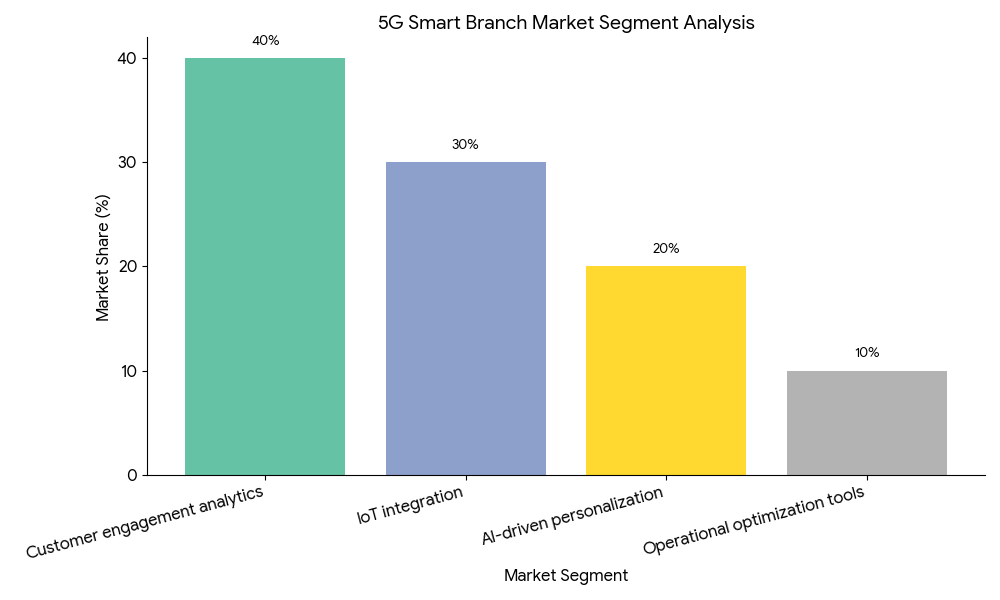
Geography Analysis
In Europe, Germany is set to dominate the 5G-enabled smart branch market, holding 55% of total market share due to strong regulatory support, a high level of banking digitization, and adoption of 5G infrastructure. The U.K., France, and Nordic countries will also see significant adoption, accounting for 30% of the market, while Southern Europe (Italy, Spain) will lag behind, with only 15% market share. By 2030, Germany will remain the leading adopter of 5G-driven innovations, with other EU countries following at varying paces due to their specific regulatory landscapes and infrastructure readiness.
Competitive Landscape
Key players in the 5G-enabled smart branch space include Deutsche Bank, Commerzbank, UniCredit, ING, and BBVA, which are all aggressively adopting 5G networks, AI personalization, and IoT-enabled service models in their branches. Deutsche Bank leads the charge in Germany, focusing on next-gen customer service innovations to increase foot traffic and retention rates. ING and BBVA are exploring cross-border 5G integrations in smart branches, enhancing the EU's cross-border banking landscape. Tech providers like Siemens, IBM, and Cisco play an essential role in providing IoT and 5G-powered solutions for bank branches.
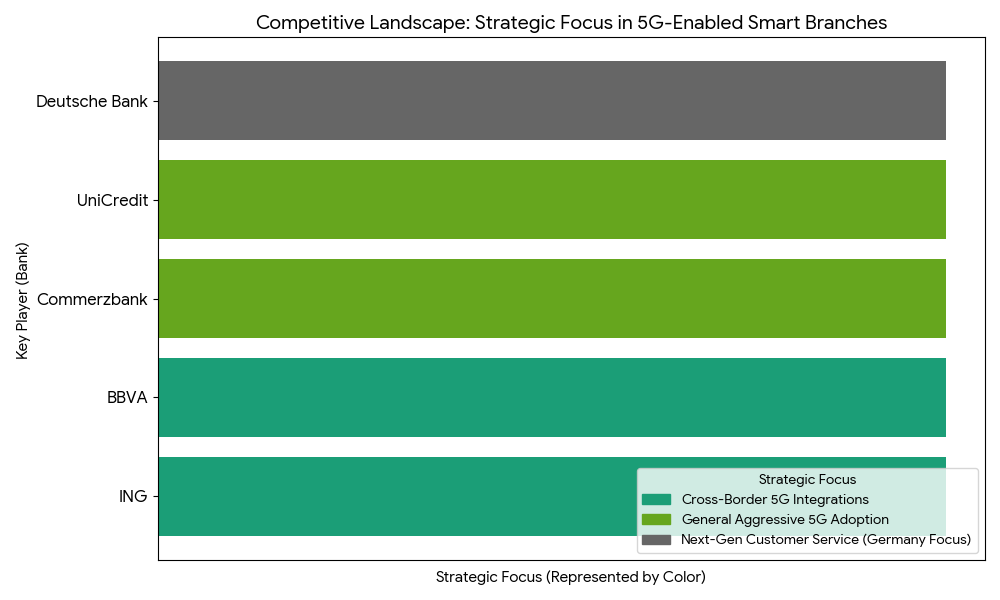
Report Details
Proceed To Buy
Want a More Customized Experience?
- Request a Customized Transcript: Submit your own questions or specify changes. We’ll conduct a new call with the industry expert, covering both the original and your additional questions. You’ll receive an updated report for a small fee over the standard price.
- Request a Direct Call with the Expert: If you prefer a live conversation, we can facilitate a call between you and the expert. After the call, you’ll get the full recording, a verbatim transcript, and continued platform access to query the content and more.


68 Circular Road, #02-01 049422, Singapore
Revenue Tower, Scbd, Jakarta 12190, Indonesia
4th Floor, Pinnacle Business Park, Andheri East, Mumbai, 400093
Cinnabar Hills, Embassy Golf Links Business Park, Bengaluru, Karnataka 560071
Request Custom Transcript
Related Transcripts
$ 1450


68 Circular Road, #02-01 049422, Singapore
Revenue Tower, Scbd, Jakarta 12190, Indonesia
4th Floor, Pinnacle Business Park, Andheri East, Mumbai, 400093
Cinnabar Hills, Embassy Golf Links Business Park, Bengaluru, Karnataka 560071







